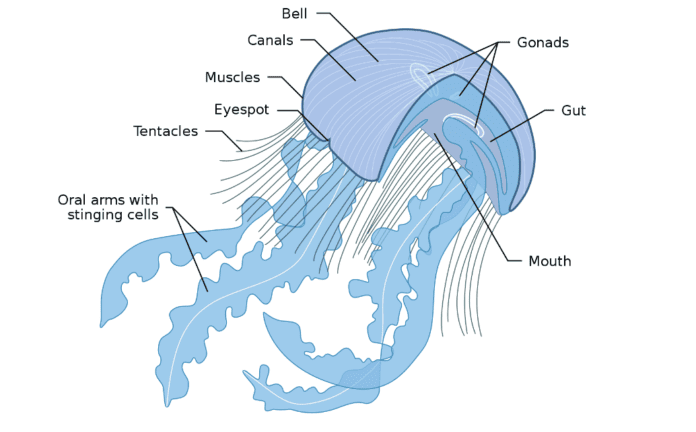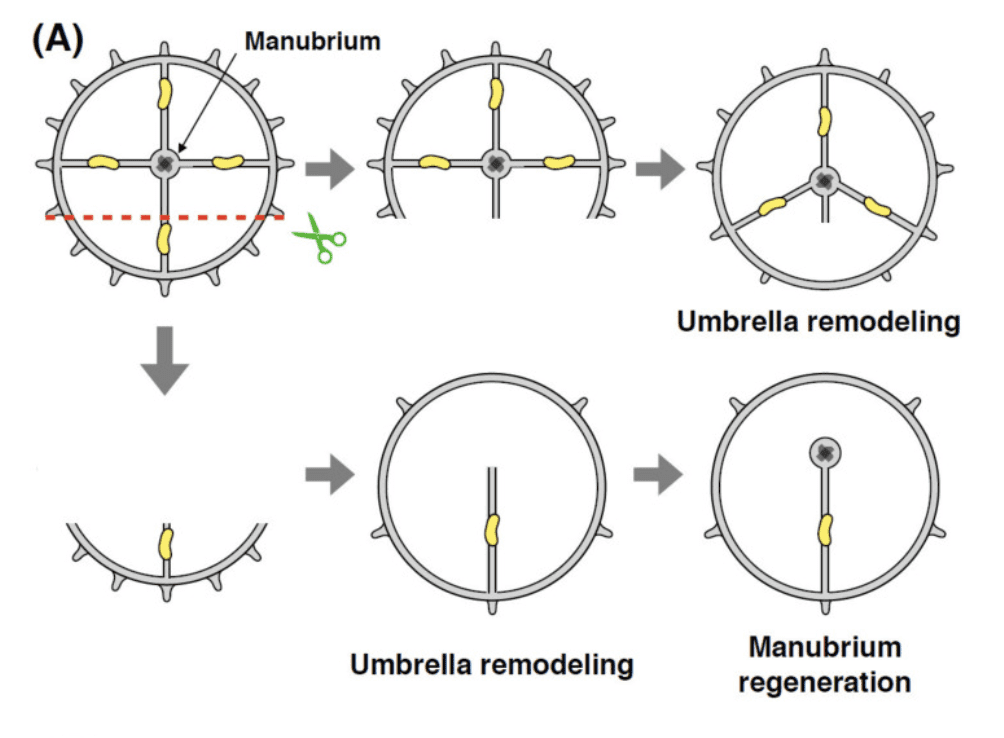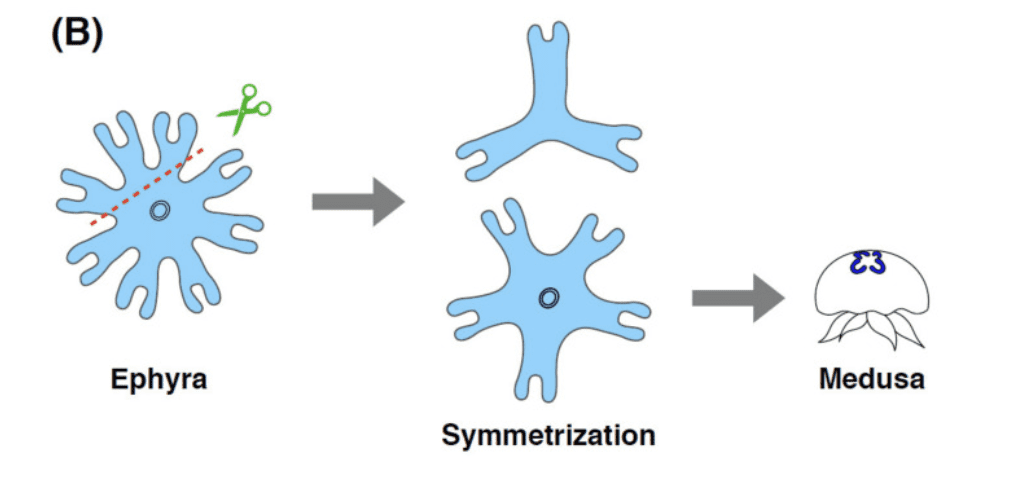
By Cristina Reo, for the Cordova Times
The question:
Dear Scientist,
I’m a fisherman, so naturally my mortal enemies are jellyfish. Specifically, the white ones that sink out our nets and sabotage our seine sets and especially the spicy red ones that burn any patch of exposed flesh. My question is, when we break jellies apart in our nets, does each piece regenerate? Like the fabled hydra, are we fishermen inadvertently making our enemies more prevalent and thus more powerful???
–Stung in Cordova AKA Rita Spann
The Answer:
This is a great question, but a tough one to answer due to the information we have at this time.
Scientific Background: There have been several studies proving that jellyfish have regenerative capabilities including Ostendarp et al., 2022; Fujita et al., 2021; and Abrams et al., 2016. One of the studies, Ostendarp et al., 2022, talks about the regenerative abilities of the upside-down jellyfish, Cassiopia, which can be found in tropical and subtropical regions. This study was able to show that the upside-down jellyfish have regenerative abilities in the umbrella, or bell, and reconfirm the regenerative abilities in the oral arms.

In Fujita et al., 2021 the Clytia medusa, when cut, will regenerate its bell, but it will not regenerate all of the musculature.
Here in Southcentral Alaska, we have Clytia, but they are quite small, 1-2 cm, and delicate. These are most likely not the jellyfish you encounter while fishing. The larger and more robust jellies we commonly see are most likely your trouble makers: the moon jellyfish, Aurelia aurita, and the lion’s mane jellyfish, Cyanea capillata. Abrams et al., 2015 mentions that the moon jellyfish “rearranges existing body parts and recovers radial symmetry within a few days,” a process called symmetrization. They also came across cases of this in the wild. Interestingly, Abrams et al., 2016 mentions that Aurelia polyps, the juvenile form, are capable of regenerating, as are many cnidarian -coral, jellyfish, and sea anemone- polyps.

In short, the answer is a strong maybe. From the looks of both of Abrams et al. papers (2015 and 2016), Auralia have some regenerative abilities as well as symmetrization abilities. This means that when they are broken apart in your nets, they most likely are becoming two jellyfish through one of these methods, depending on the circumstances. How effective these new jellyfish are at surviving is unknown. As for the lion’s mane jellyfish, Cyanea capillata, we have not come across a case where anyone has tried cutting them open to see what happens. One of the reasons for that is because jellyfish are very difficult to grow in captivity to do an experiment like that. They are so fragile and not used to encountering surfaces, so they tend to do poorly in tanks. However, if it is possible and even common for jellyfish to have regenerative capabilities, I would not put it past the lion’s mane jellyfish.
We have included the doi’s of all the scientific articles referenced in answering this question:
- Fujita et al., 2021 doi: 10.3390/genes12050758
- Ostendarp et al., 2022 doi: https://doi.org/10.3389/fmars.2022.949233
- Abrams et al., 2015 doi: https://doi.org/10.1073/pnas.1502497112
- Abrams et al., 2016: 10.1016/j.zool.2015.10.001
Ask a Scientist is a series by the Prince William Sound Science Center. A special thanks to Dr. Rob Campbell of the PWSSC for helping answer this question. PWSSC is currently seeking more questions from the community. If you have a scientific-related question, please email it to creo@pwssc.org.





